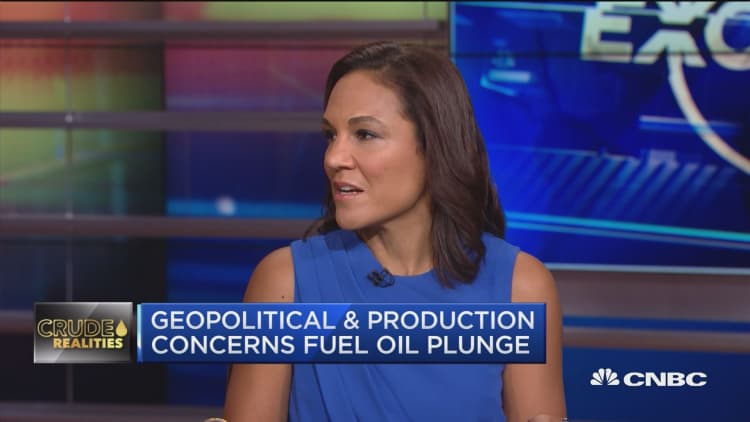Oil prices continued last week's sharp decline on Tuesday, triggered by expectations that Saudi Arabia and Russia could pump more crude to compensate for a potential supply shortfall.
Brent crude futures were down 70 cents, or nearly 1 percent, at $74.60 a barrel at 12:16 p.m. ET (1506 GMT), after settling on Monday at their lowest since May 8 at $75.30.
U.S. West Texas Intermediate (WTI) crude was down $1.91, or 2.8 percent, at $65.97 a barrel, sitting around its lowest since mid-April.
Brent crude now commands its largest premium over U.S. futures in more than three years, meaning that U.S. exports are rapidly becoming far more competitive globally than those from northern Europe, Russia or parts of the Middle East.

"Rising anticipation of a gradual exit from the OPEC-led output-cut agreement has continued to weigh on oil prices in today's trading session," said Abhishek Kumar, senior energy analyst at Interfax Energy Global Gas Analytics, adding that the devil will be in the detail when the cartel meets in June.
"Market participants will closely watch how quickly any such measure is implemented and whether it will go beyond just balancing the output drop from Venezuela."
Concerns that Saudi Arabia and Russia could boost output have exerted downward pressures on oil prices, along with rising production in the United States. Saudi Arabia and Russia have discussed raising OPEC and non-OPEC oil production by 1 million barrels per day (bpd) to counter potential supply shortfalls from Venezuela and Iran.
The Brent price has fallen by nearly 7 percent since hitting a 2014 high above $80 on May 22.
"High uncertainty clouds the short-term outlook and we maintain a neutral view. In the medium to longer term, we still see oil prices falling as indicated by the downward-sloping futures curve. Our low for longer view is deferred, not refuted," Julius Baer's Norbert Ruecker said in a note.
The Organization of the Petroleum Exporting Countries (OPEC) is due to meet in Vienna on June 22.

Volatility, a way of measuring demand for a derivative, on highly bearish Brent crude sell options that expire just after the meeting has shot to its highest since February.
The spread between Brent and WTI stands at nearly $9 a barrel, its widest since March 2015 because of the depressed price of U.S. crude compared with Brent.
Record crude oil volumes from the United States are expected to head to Asia in the coming months, nibbling away the market share of OPEC and Russia.
U.S. oil production has surged by more than 27 percent in the past two years to 10.73 million bpd. That puts the United States ahead of Saudi Arabia and within reach of top producer Russia, which pumps about 11 million bpd.

